


Delivery apps have already become a part of our lives, and the reason is obvious — convenience. Not only do they help us save time on cooking and traveling to food establishments, but they also provide users with a wide range of choices.
According to Statista, the number of people ordering food online is projected to reach 2.5 billion users in 2029. Therefore, developing your own delivery app is a promising initiative that can benefit your business. You can expand your customer base and gain a competitive advantage over those who have not yet embraced digitalization.
In this article, we will talk about the types of food delivery apps and list their main features. At the end, we will cover the stages of development and discuss how much it can cost you.
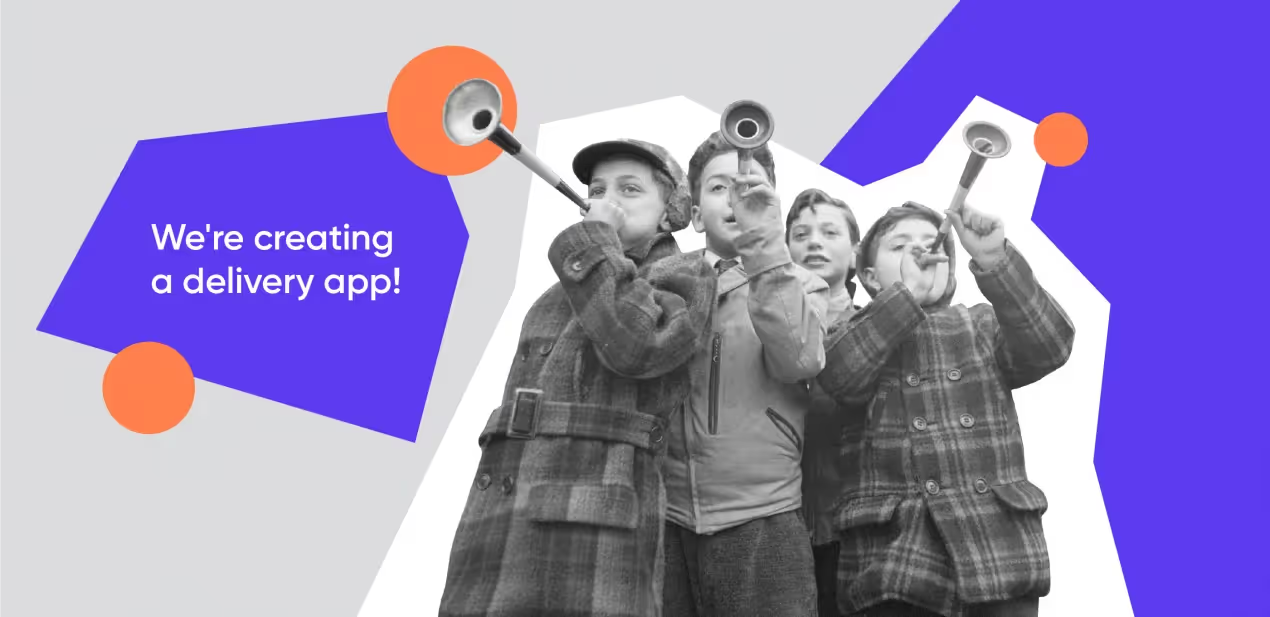
According to Grand View Research, the fast growth of the food delivery business may be connected to improved network connectivity and an increase in the number of smartphones. The global online food delivery market revenue is projected to reach $505.5 billion by 2030. And it seems like a perfect time for mobile app development of your own app.
The food delivery app market is not only extremely dynamic and fast-growing but also very broad. As they say, there is room for everyone. The marketplace is certainly not monopolistic — in the US alone, there are five major players that have divided the market between each other — Uber Eats, DoorDash, Caviar, Grubhub, and Postmates. In the UK, there are also Just Eat and Deliveroo, while in China, which has the largest food delivery services market in the world, the most used app is Meituan.
So, if you have thought about creating your own food delivery service, it is the perfect time to start realizing your ideas. But don’t jump in right away — we know that when people want to create a delivery app, they face a lot of obstacles, like what features to pick, how to find a trustworthy contractor, how to monetize the idea, etc.
Here at Purrweb, we have created the ultimate step-by-step guide on how to build a delivery app. We have revealed all the secrets of costs, timeframes, and key features for a successful app. Enjoy!
Food delivery services are a mediator between a hungry customer and a restaurant. Here is the scheme of how it works.
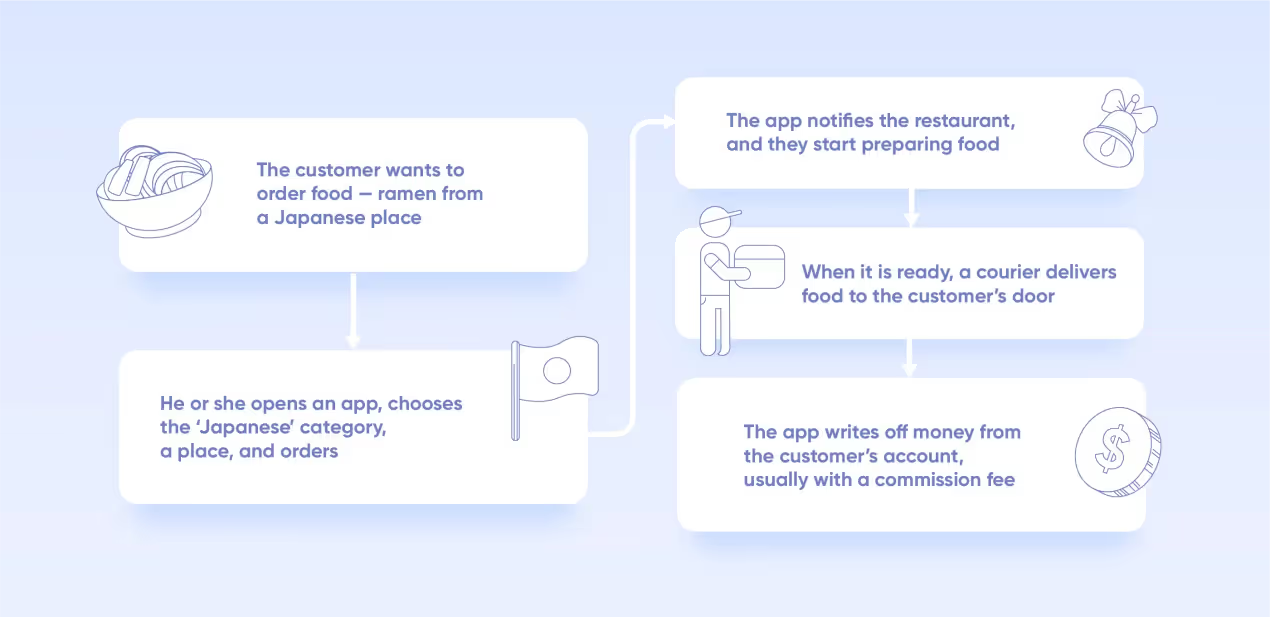
Some big food corporations, like McDonald’s or KFC, also built their own delivery apps that work only with their restaurants. It might be useful when a customer knows exactly what they want, but having a wide choice of restaurants is much more interesting, right?
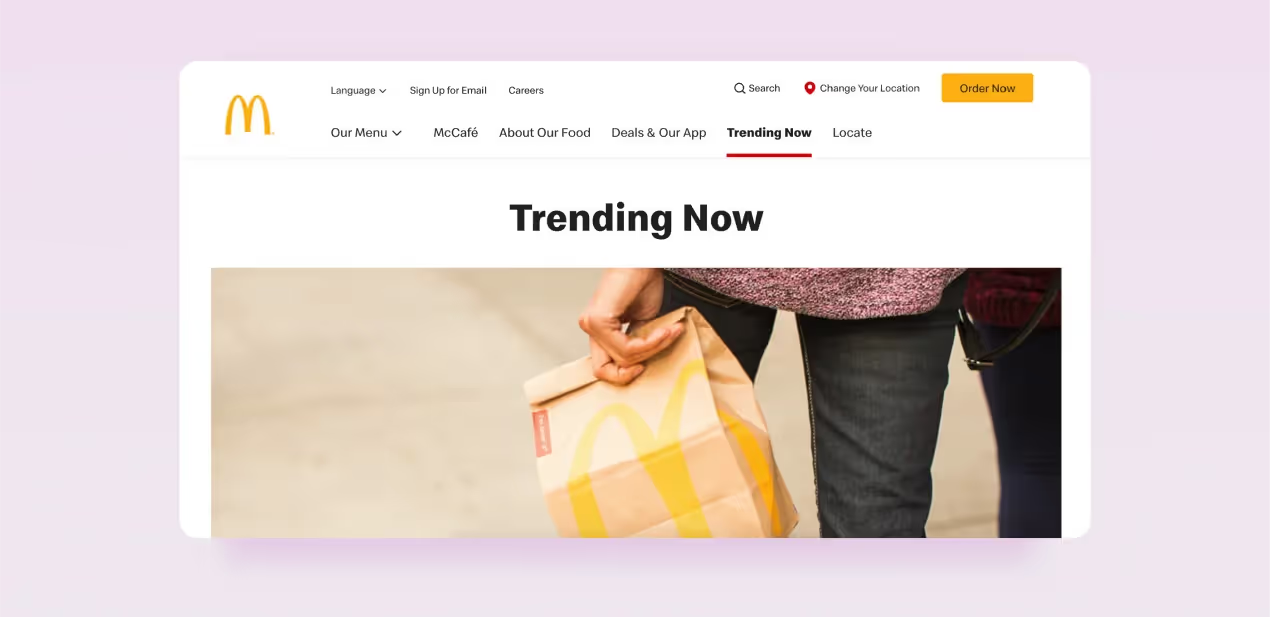
Let’s talk about money. The delivery business is profitable and fast-growing. Just look at the numbers: Uber Eats generated $12.2 billion in revenue in 2023, while DoorDash’s revenue for 2023 was $8.63 billion, which is 31% more than in 2022. Sounds good, huh? But first, you need to choose a monetization strategy before diving into delivery app development.
There are a few monetization options used by major companies, as well as small delivery food services. Here, we list the three most popular models:
Often, apps charge restaurants a percentage for connecting them to customers who are craving food. For example, Uber Eats receives up to a 30% commission fee for each order and restricts eateries from increasing their prices to cover these costs.
Expensive commission can be fatal to small local restaurants, and to prevent them from looking elsewhere, we advise considering all parties’ interests, coming up with a reasonable fee, and looking at other sources of income for a delivery app.
In contrast to the previous option, here, customers pay to get their meals delivered to their front door. Often, apps charge a small fee — from $0.99, like Uber Eats, to even 30% of the order price like Swiggy. Some services use flat rates, while others generate a fee depending on how far you are from a restaurant and what your total is.
Despite the stability of this type of income, it is difficult to recover the investment in delivery app development on this model alone. We recommend thinking about implementing a mix of different options that work best for you.
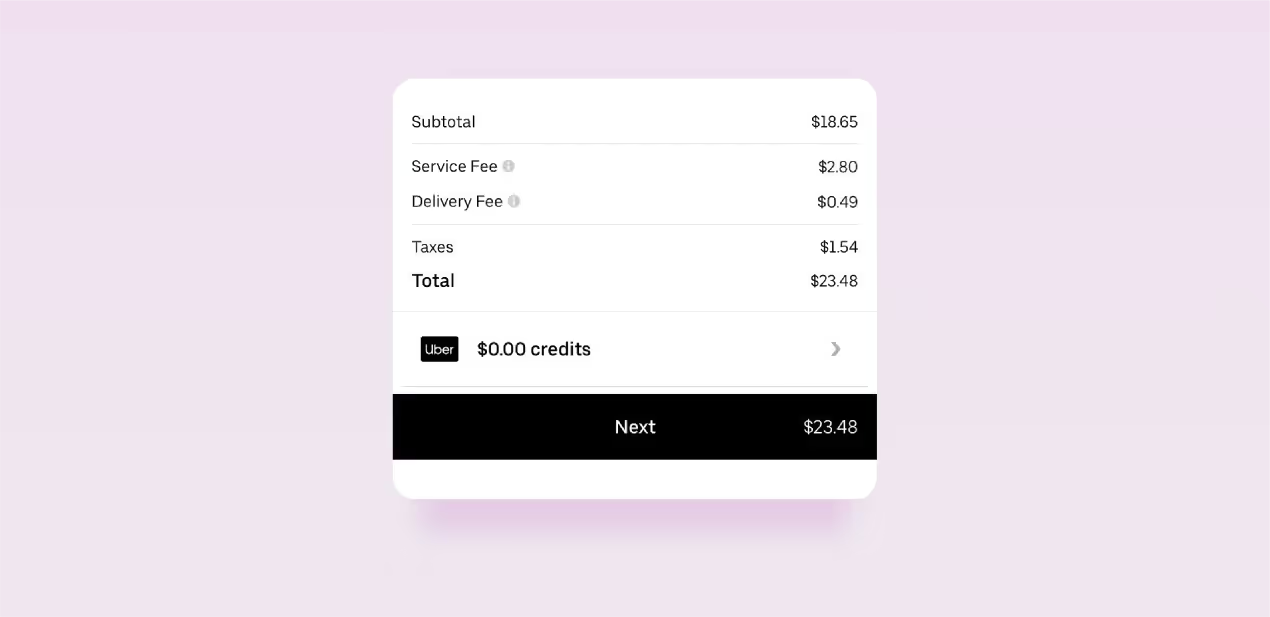
This is another way for delivery apps to make money. More often than not, delivery services partner with restaurants to promote them to the top of the list or to advertise them on the main page.
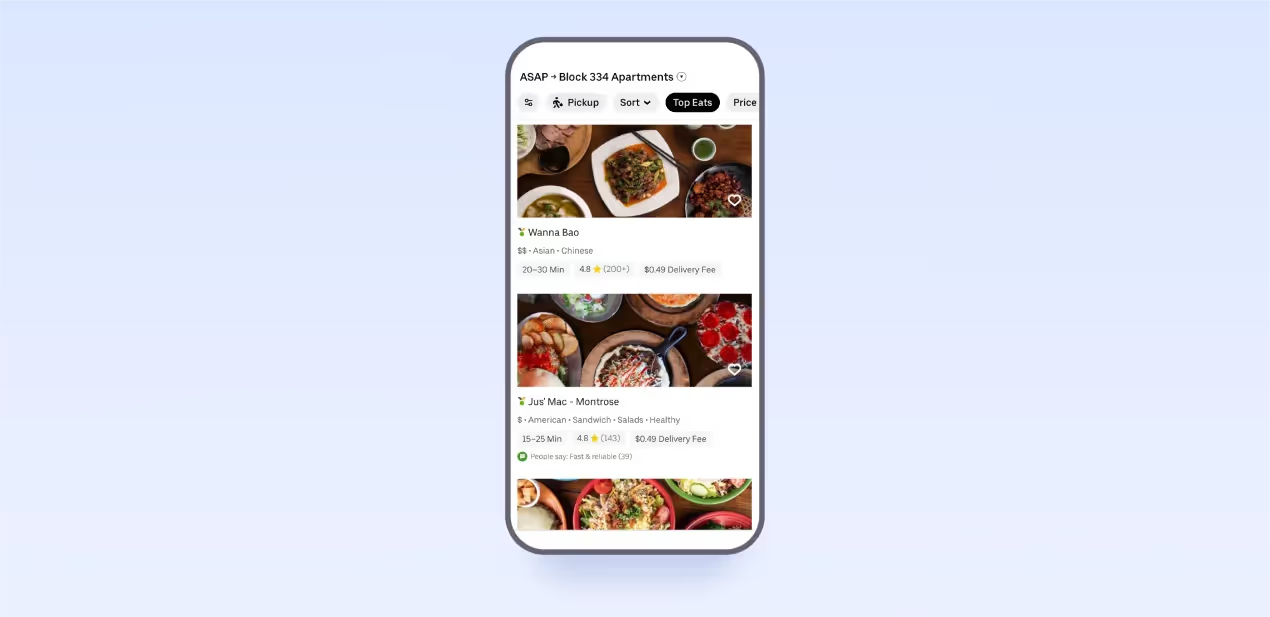
The new features have been recently implemented by major players like Uber and DoorDash. Now, apps offer monthly passes for a small fee and with benefits, such as free delivery or extra discounts.

Here is our advice: if you have been wondering how to build a delivery app and make it successful, the key is not to stick to one source of income and combine multiple monetization strategies.
When you are looking to choose the main features for your app, the first thing to do is to define a business model, target audience, and their needs. To help you, we created a list of questions you should answer first:
After discussing it with your team, it’s time to start working on the first version of your delivery app. The majority of services separate apps for customers, restaurants, and couriers for both iOS and Android, but don’t be intimidated by the number of apps!
The good news is that we work with ReactNative — the framework that allows us to develop a delivery app really quickly and use one JavaScript code and one team for both iOS and Android systems. Instead of six different apps, we could develop just three or even one with different interfaces.
We always thoroughly discuss it with clients and find the best solution for all parties. Based on our previous experience, we gathered key features that are crucial for each side’s delivery app.
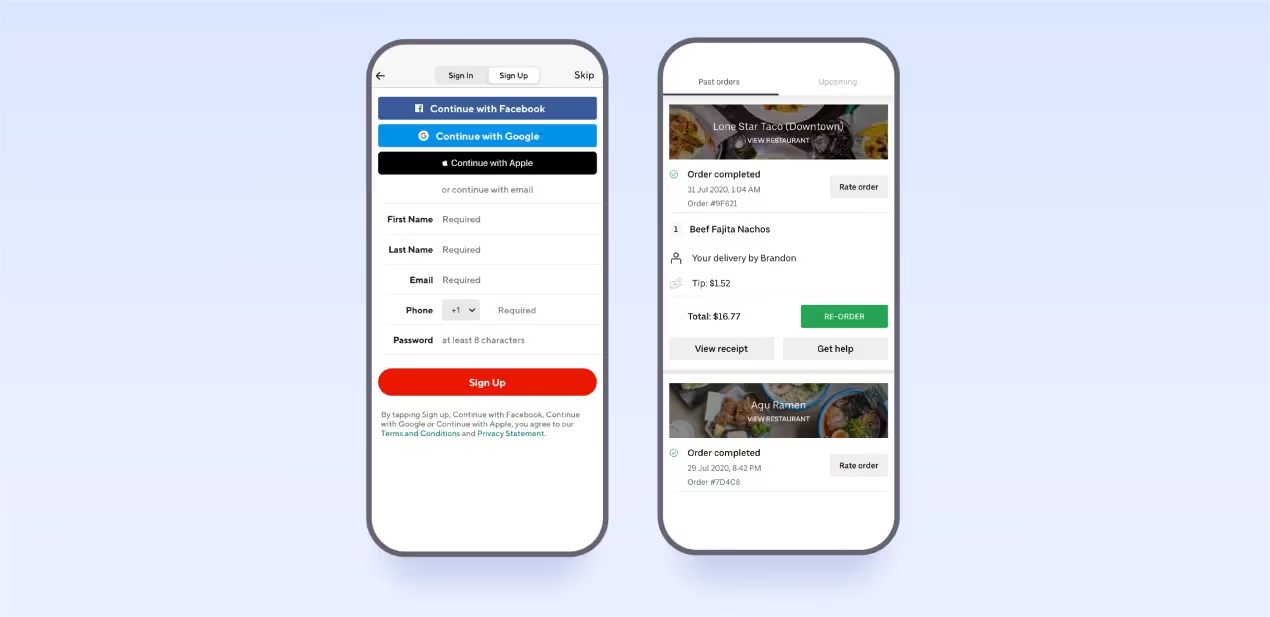
There are several main types of delivery apps that vary in their target audience and, therefore, need different features to be included during the app development process.
These are the apps that give users access to different restaurants and an opportunity to easily order food from them. Things like Uber Eats or GrubHub would be a great example of this type of app. The point is that you have a lot of options gathered in one place, so you can quickly go through them and choose the ones you like most.
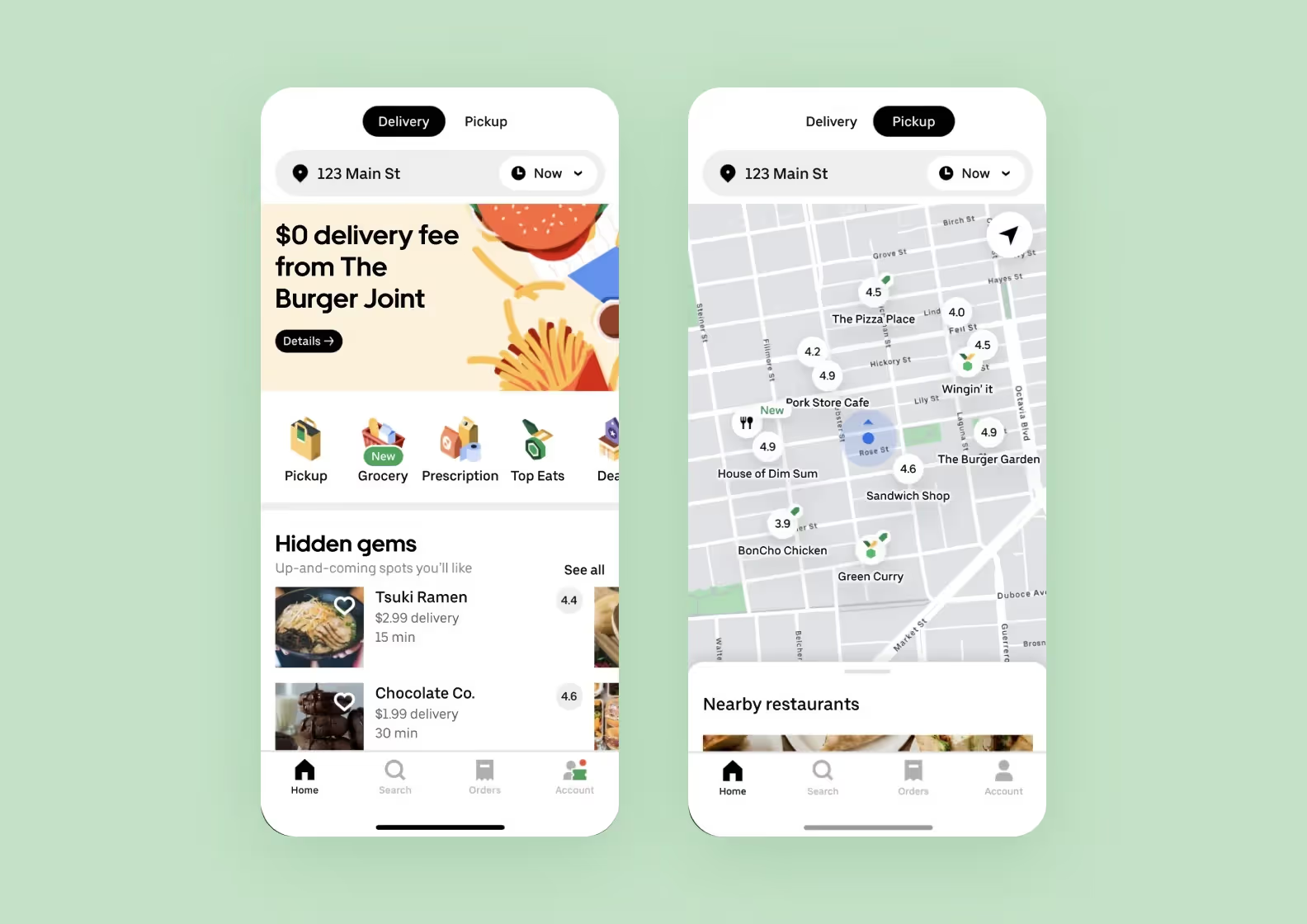
It’s also easy to compare prices or make several orders from different places in a few taps without filling in your delivery information over and over again. The listed restaurants, in turn, get more clients and increase their revenue by using the app.
By choosing this business model, you’ll satisfy both restaurants and their clients, which means you can charge both advertising and delivery fees. The goal is to attract more customers with a user-friendly interface and seamless user experience to recover the investments in app development.
That’s why your delivery service would need various filters, a secure payment system, and GPS integration on the client’s side. On the restaurant’s side, you’ll need a convenient dashboard and analytics tools.
<div class="post_divider"></div>
OrderUp is a platform where restaurant and hotel owners can create and customize a page for their establishment, while customers can order delivery or book a table. The clients wanted to redesign the mobile and web versions of the service to make it easier for business owners and their customers to use the application.

We created categories and subcategories so customers wouldn’t waste time searching for the right dish and added a filter button in a more visible place — at the top of the screen.
We also placed the order information in the drop-down menu on all screens. For business owners, we created a custom dark theme. It was important to keep the colors contrasting but comfortable for the eyes.
In the end, customers liked the new design, especially the dark theme.
<div class="post_divider"></div>
A grocery delivery app is pretty much like a restaurant aggregator app, but the contents are different. These apps are the very thing that deprive remote workers of the last reason to leave their homes. We’re obviously joking, but it’s true that grocery delivery apps are very convenient and can save a lot of time.
Users just choose a store in the app and then add needed items to their virtual carts. In ~30 minutes, they get the order without ever leaving their house. It encourages people to buy more because they don’t have to worry about carrying heavy bags or wasting time walking around the stores.
There’s a lot of space for imagination and app development. For example, you can partner with lots of stores or choose a particular niche if you don’t want to compete with big guys like Uber Eats or Instacart. You can incorporate a real-time chat with the driver or profitable promotions — or even do both.

These apps, as you may have guessed, combine the two previous types. Full-service apps include ordering from both restaurants and grocery stores. The huge advantage is that users can make all the purchases in one place. No matter if they’re in the mood for Chinese take-out or cooking their own food — they’ll open your app. This way, your app reaches a larger audience and brings in more money.
If you decide to go big and launch a full-service app, you’ll need to spend a bit more time on app development. For example, you’ll have to incorporate a more complicated system of filters in order not to start suggesting restaurants when your users are searching for groceries. Restaurant and grocery delivery services within the app should complement each other rather than contradict and confuse users.
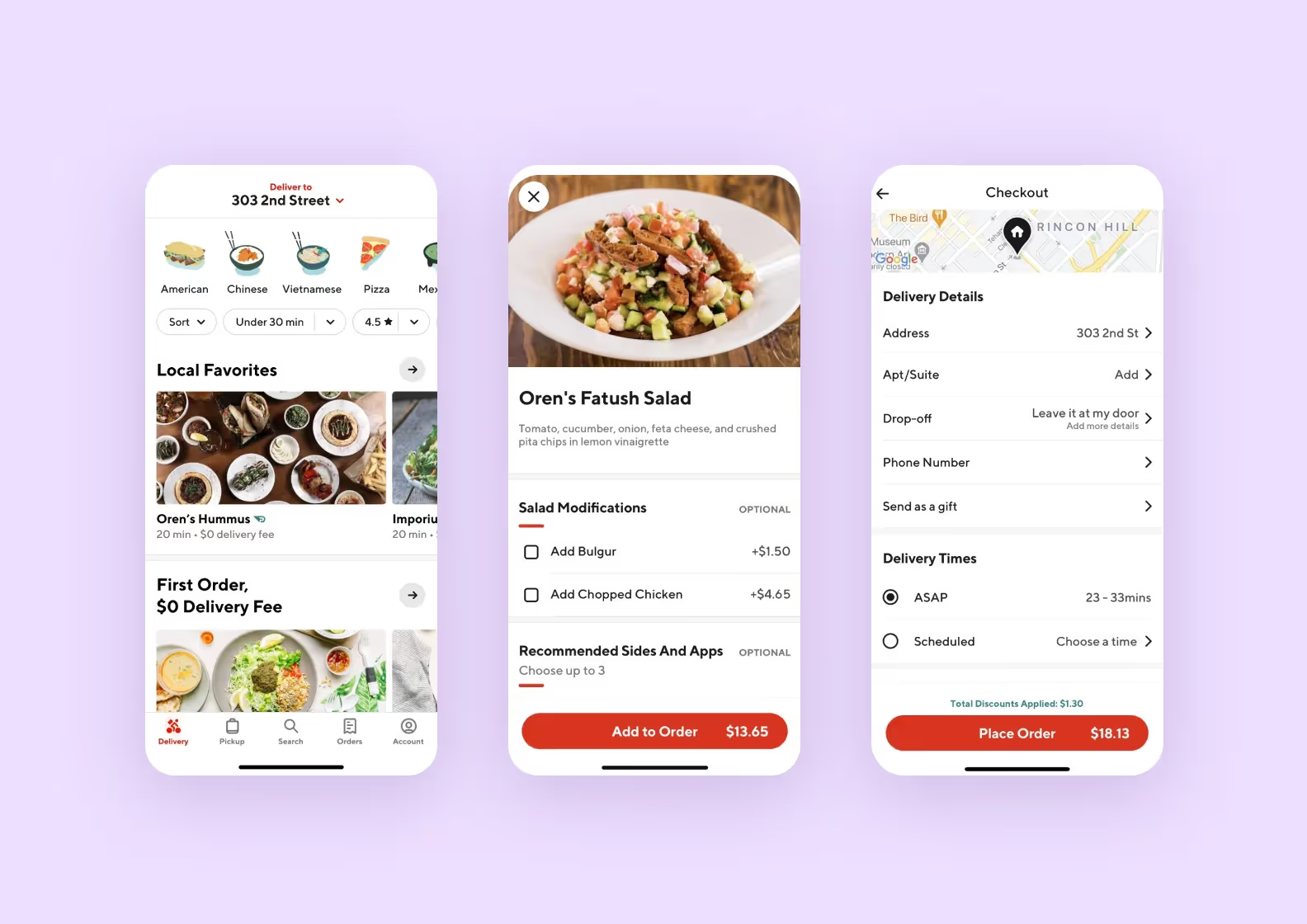
It’s not only ordinary people who want to order groceries online and save their time, but restaurateurs as well. You can bring restaurants and suppliers together in one place by providing an easy-to-use communication channel. Or you can invest in app development and create a platform where catering services and event managers collaborate to organize the best parties for their clients.
Proper B2B food delivery apps could solve real problems in the market. Once you do the proper research, you’ll see a huge need for apps that make life easier for everyone involved.
The set of features for a B2B food delivery app is different in every specific niche. It can include a catalog of the goods, a real-time chat, and some GPS integration to ease the logistic issues.
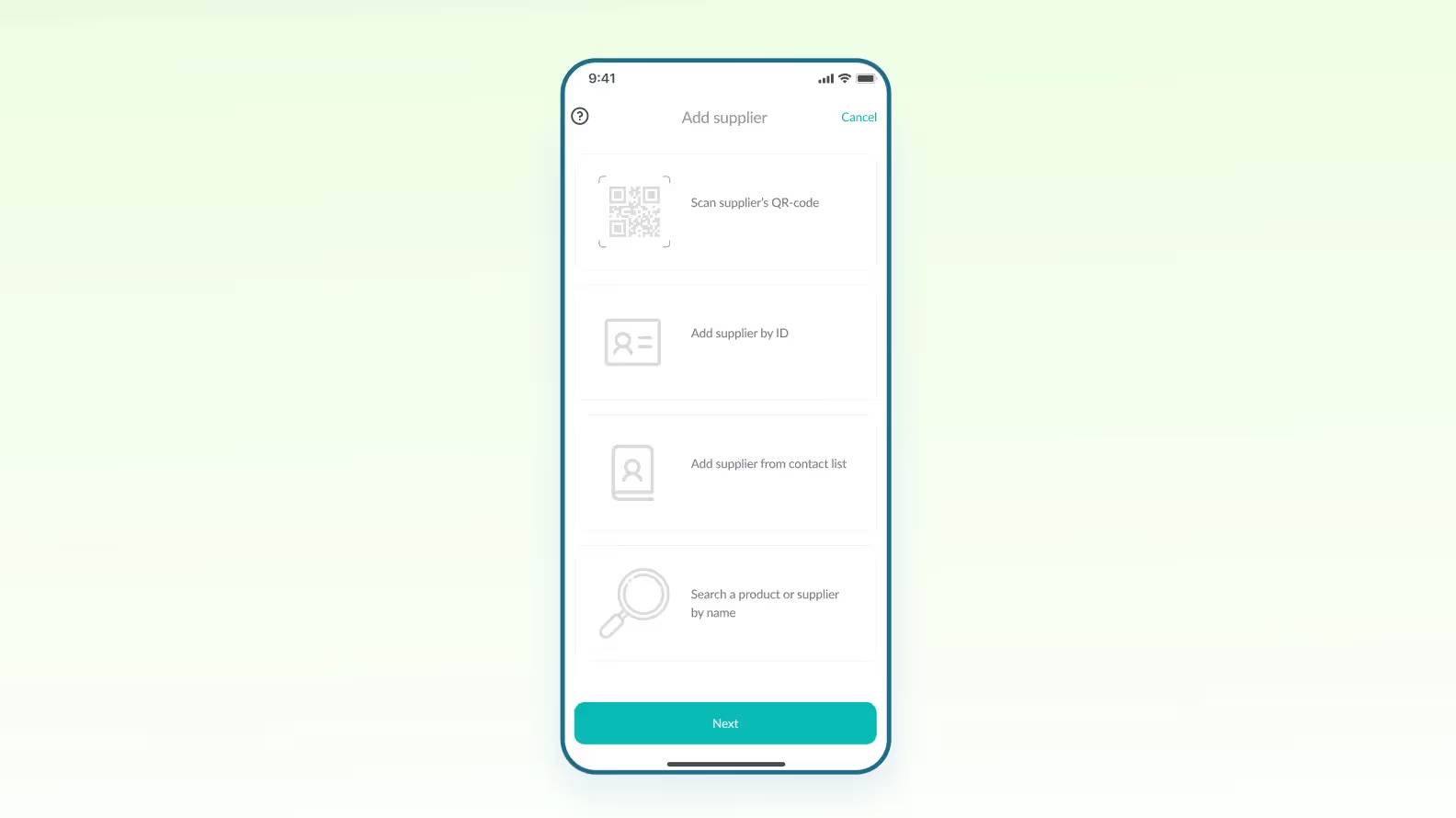
These are the commercial kitchens that prepare food only for delivery or takeaway. It means they don’t have any space for customers to dine in, so there’s no need to pay a lot of rent or hire waiters.
Obviously, dark kitchens need to accept orders online on someone else’s delivery apps or their own. You can invest in the app development and open your own dark kitchen or sell the app as a white-label solution for others.
The difference between a dark kitchen app and a restaurant aggregator is that there will only be a menu of only one restaurant. So, you’d better focus on an accurate search for specific dishes rather than different restaurants. Provide in-depth analytics to keep the restaurants interested in using your white-label solution over a common food delivery service.
<div class="post_divider"></div>
Talentum is an app for ordering food from an individual chef. Previously, the project worked manually: communication was done via chatbot and WhatsApp, and then the manager personally searched for a suitable chef. The client received investment and needed to develop an MVP quickly.

To increase users’ trust in the chefs, we emphasized photos rather than food. We also tried to create a feeling of dialog — developed a chatbot that asked about taste preferences and kept all order management in the chat.
The development ran in parallel with the design, that’s how we were able to launch the app in four months.
<div class="post_divider"></div>
If you reach this part of the article, then you’re fully aware that the delivery app market is trending and growing fast. Naturally, after you define a business model, monetization strategy, and main feature, the question of costs arises. We try to make the process for our clients as transparent as possible, and we always openly discuss all financial and time matters.
We know how to build a delivery app quickly — for the Purrweb team, an average delivery app development time is 6.5 months. Let’s do math now!
When you create a delivery app with us, you pay for:
Overall, a team of seven people will work on your food delivery app. Here is the timeline with prices:
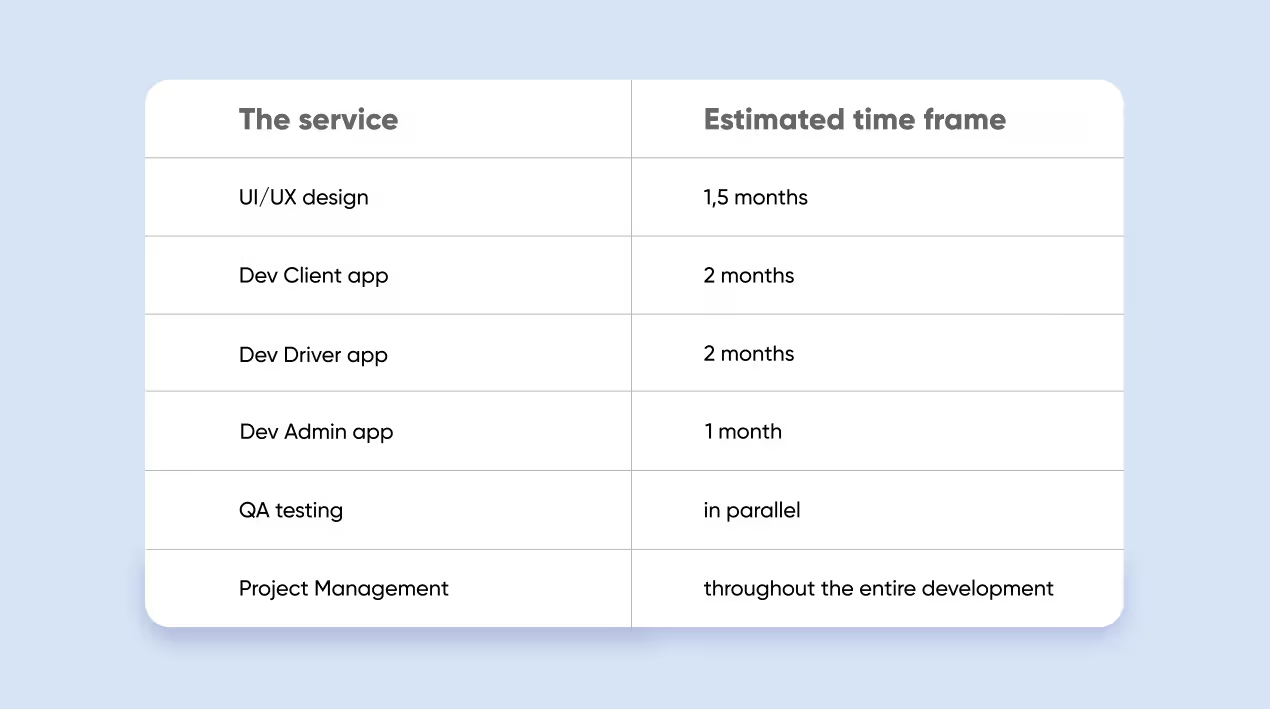
According to similar projects we have made, the estimated cost of a delivery app is from $80,000 to $100,000 for a full cycle of development, including UI/UX design, creating iOS and Android versions, and QA testing.
Fortunately, you’re not the first to start delivery app development. We suggest following these tried-and-true steps to create a successful platform:
First off, look at the different food delivery apps, and their interfaces and general user flow. Then, find a problem in the market that you could possibly solve for your future users. After doing that, you can define the target audience. Once you know the audience and research their preferences, online behavior, and their exact needs, it will be easier for you to set clear goals and tasks for your project.
The information from the first step will help you choose a business model for your future app. You can charge for advertisement or delivery fees, sell premium subscriptions, or choose a single payment model when users pay only once to install your app. The goal of this step is to find a business model that will satisfy your customers and provide you with a stable revenue stream.

You can hire your own team, cooperate with freelancers, or find a trustworthy development agency. Usually, the last option proves to be the most efficient because outsourcing the app development is cheaper than maintaining an in-house team and much more effective than dealing with freelancers. No matter who you’re hiring, pay attention to their portfolio and experience with projects that are similar to yours.
The exact feature set depends on the type of the app, the expected user experience, and the needs of your target audience. Approach professionals to decide on what features to include in the app. Share your ideas, listen to their experience, and define the scope of work to be done. Don’t try to include all of the features right away. You’d be better off doing this after releasing the MVP and collecting feedback from real users.

If we’re talking about the technology stack, you need to remember that your choice on this step will influence how the app works in general. For example, some technologies are better for handling large datasets and managing extensive restaurant menu listings and information. At the same time, other options help with real-time updates and interactive features. It’s okay if you have no idea which tech stack to choose. Let your development partners <a class="blog-modal_opener">do it for you</a>.
At this stage, the professionals will step in. Professional designers will work on the visual side of your app. You can suggest ideas and correct some details, and the team will do the rest of the work. When the design is ready, it’ll be time for the delivery app development itself. Just relax and wait for the first version of your app to come to life.
Don’t rush, take enough time to test the app and ensure that it works as it should. After thorough testing, your users will get a convenient and well-working solution for their everyday problems.
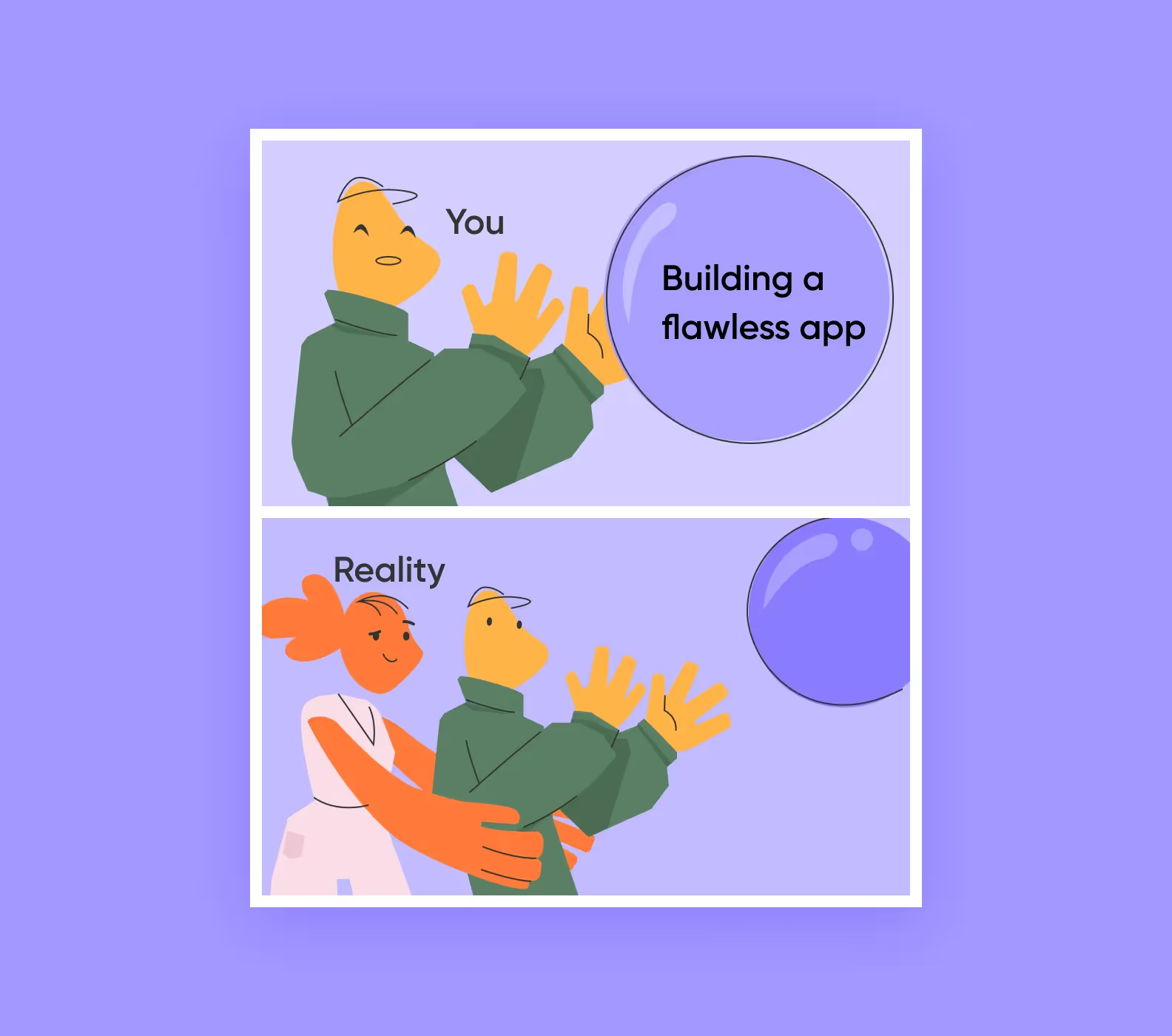
Finally, you can launch your app and see how your idea becomes a real-world tool. Promote your app to attract more users and get real feedback.
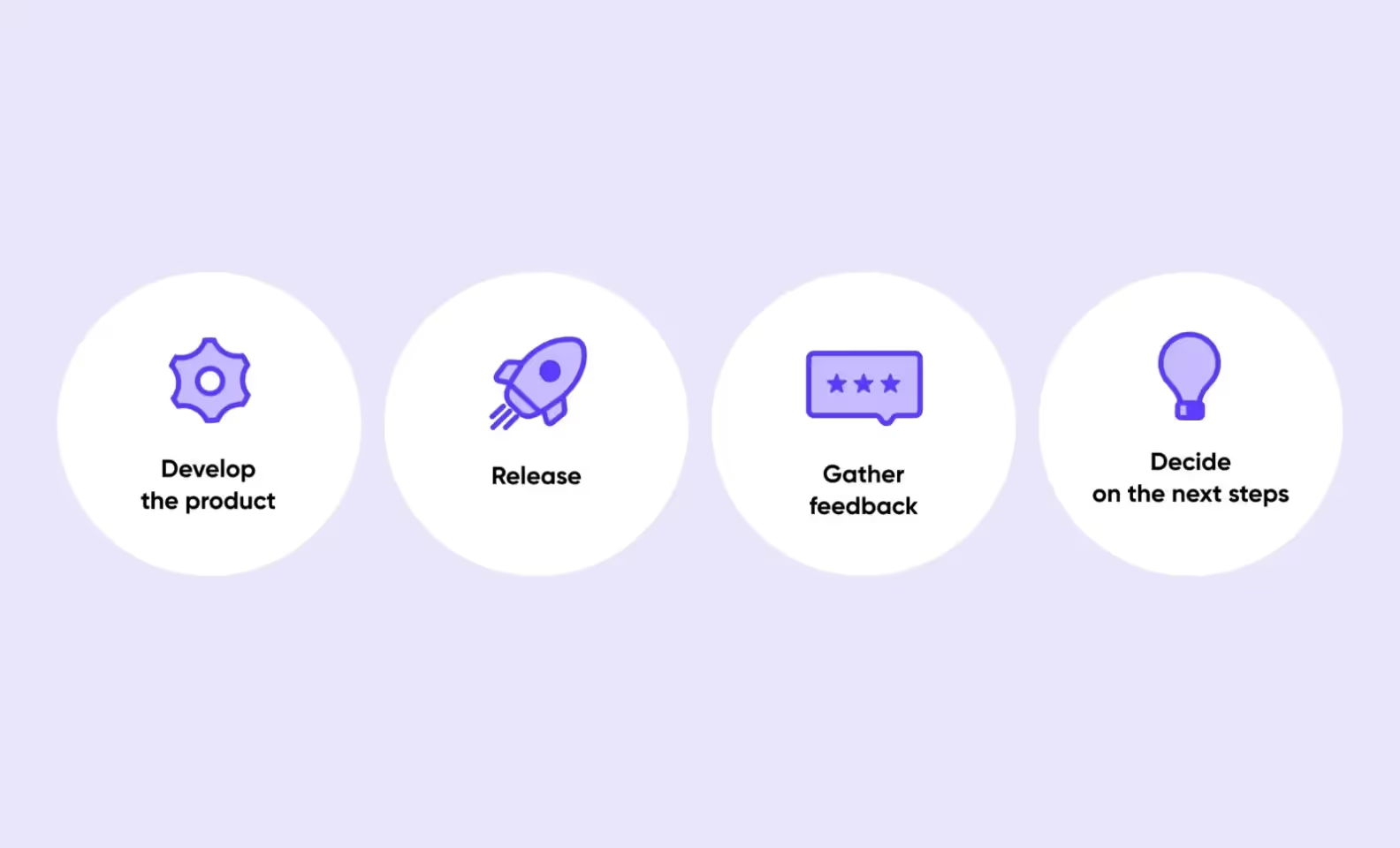
The question is not just ‘How to build a delivery app,’ but also ‘Who can execute the app?’ If you decide to develop an on-demand delivery app, an experienced contractor can significantly facilitate the process and offer you the best solutions on the market.
We know that finding reliable and trustworthy outsourcers can be a headache for a startup. But at least you can do these three small things to protect yourself before entrusting your idea to anyone.
First of all, Google a company name and check out their website and client reviews. Then, visit platforms like Behance and Dribbble and thoroughly study their design works. Companies that value their reputation care about their online presence and showcase what they can do.
At Purrweb, we even run a blog to share our knowledge and help you learn about our experience in full-cycle app development.
We strongly advise choosing someone who works with React Native and values your time and money. The framework allows us to create two different apps with one code, while native UI elements will make them perform like solutions built with Swift and Java.
Our experience says if you want to test a business idea, React Native is the perfect solution that saves time and your budget. At Purrweb, the average time required to develop a fully functional React Native app from scratch is three months. Once it’s done, go share the product with users and get initial feedback, or present it to investors and get financial support.
After you read a company’s blog and check the projects they’ve already delivered, listen to your intuition. If something confuses you about a developer — it’s better to keep looking until it clicks.
In 2024, food delivery services processed billions of orders on a daily basis. The market expands fast, and if you have thought about executing your own delivery app, it is the right time to start.
We are often asked how to build a delivery app and where to start. The marketplace is big enough for everyone, and before you start, we recommend defining your niche, business model, and target audience. It is also important to think about how you are going to make money — implementing commission fees, delivery fees, advertisements, all together, or maybe you come up with something absolutely new and creative.
We will help you to execute the ideas and figure out key elements. Remember that most services separate apps for customers, restaurants, and couriers for both iOS and Android. But you don’t have to pay for all six apps — React Native uses a shared codebase and allows us to build apps for two mobile platforms simultaneously. Also, feel free to use our list of key features your app needs or just ask us about specific details for your upcoming project.
We know how to create a delivery app in 6.5 months, and we will be happy to help you with the execution. With Purrweb, the development will cost you around $85,000.